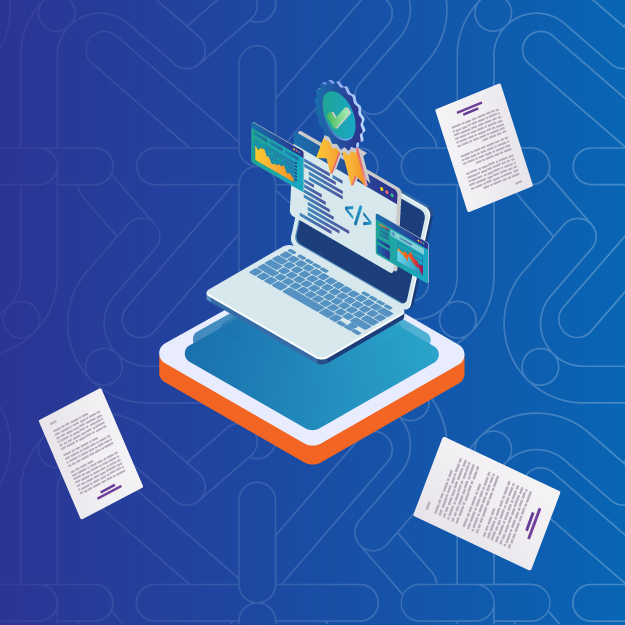The path to securing Authorization to Operate (ATO) approval presents a myriad of challenges, such as complex regulations, the potential for human error and the constant threat of cyberattacks. The role of an Authorized Official (AO) necessitates both speed and thoroughness to ensure an organization’s risk is minimized while also safeguarding sensitive information. Traditional manual, point-in-time assessments are proving insufficient, resulting in significant security risks. As digital transformation accelerates in both the Government and Private Sector, regulatory compliance requirements have also increased, yet the tools and processes used to meet these standards fall behind. This disconnect poses a challenge for AOs, underscoring the urgent need for innovation in the ATO approval journey.
Preventing Compliance Drift

To stay ahead of the threats against the nation while simultaneously reducing the friction and corrosion in the compliance process, a proactive approach of implementing necessary measures and safeguards before they are mandated by regulatory requirements is essential. As Brandt Keller, Software Engineer at Defense Unicorns, stated during a recent webinar discussing the ATO approval process, “New technologies are coming, and we need to implement them and understand what they do, how they do it and what controls they do or do not satisfy.” The role of compliance within the DevSecOps process is pivotal, especially when switching from one technology to another. This decision must consider how the change impacts compliance, as the environment shift can alter the ATO posture. Such changes may result in drift or even expose the system to malicious actors seeking to escalate privileges or perform unauthorized actions. While compliance and security are often viewed as separate processes, they can and should be integrated to provide an additional layer of defense.
Preventing drift in IT systems is a crucial aspect of maintaining continuous compliance. AOs must actively collect and report data to accurately reflect the current state of their systems. Leveraging open standards on a platform is essential for effectively utilizing data. To achieve this, AOs need reliable methods for producing and regularly assessing data. Building a system from the ground up with compliance in mind involves meticulously implementing and automating controls that can be rerun consistently. The process must be both repeatable—able to redo tasks—and reproducible—able to collect evidence and achieve the same results. Any deviation indicates a potential issue, a change or an environmental modification that has made it less compliant. This approach allows AOs to confidently attest that their ATO meets all required controls and prevents any drift.
Implementing Automation
Automating processes within DevSecOps pipelines has emerged as a pivotal strategy, particularly streamlining compliance checks before system deployment. This approach allows decision-makers to assess risk before a system is even deployed. Moreover, the ability to continuously evaluate and update data in real time enhances accuracy and ensures timely access to critical information. However, accessibility of data remains a challenge due to the number of disconnected environments in existence. Open standards such as OSCAL solve this problem by providing a unified framework for continuous data integration. By adopting platforms that adhere to open standards, organizations can foster innovation and empower AOs with data in a familiar and actionable format, thereby optimizing efficiency and bolstering security measures.
ATO Risk Management Framework (RMF) artifacts represented in OSCAL machine-readable formats break down information silos, achieving effective communication across teams and facilitating seamless data handoffs. Automation is pivotal in expediting the decision-making process, alleviating the burden on the human workforce, enabling AOs to access better-quality data and making risk-based decisions more efficiently. While the potential for error is still present, automation significantly mitigates human error in data handoffs across all controls and systems. It also helps security professionals focus on managing risk rather than completing rudimentary compliance tasks.
Automating technical and administrative controls is not the same. While traditional approaches rely on application programming interface (API) data, nontraditional methods such as infrastructure as code (IaC)—managing computing infrastructure through provisioning scripts—or compliance as code—managing regulatory requirements by encoding them into automated scripts or code—offer alternative paths. These approaches allow organizations to establish rules and apply validations programmatically, mirroring the precision and speed of technical controls. However, not all controls are created equal; some function as checkboxes without mitigating risks. The critical controls that significantly impact an environment’s security posture should be the priority for automation. As emphasized by Travis Howerton, Co-founder and CEO at RegScale, “it is less important what percent of total controls are covered than what percentage of your total risk you are mitigating with automation.”
The cadence mismatch between cyber threats that move at lightspeed, and heavily manual compliance processes must be fixed. “The big part of what has to modernize,” according to Howerton, “is taking more automated approaches, leveraging advances in technology and thought leaders in this space to figure out how we can do things in a more automated manner to bring the principles of DevSecOps to compliance.” This strategic focus will ensure thorough and repeatable processes and prepare AOs for a future where compliance and security are dynamically intertwined, ultimately supporting better risk-based decisions and unlocking the full potential of digital transformation. By accepting early that ATOs should be more real-time and continuous, AOs can better position themselves for the future.
Watch RegScale and Carahsoft’s webinar, AO Perspectives: Managing Risks and Streamlining ATO Decision-Making, to learn more about modernizing the ATO approval process.